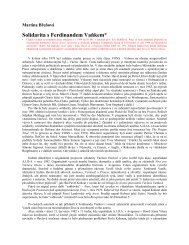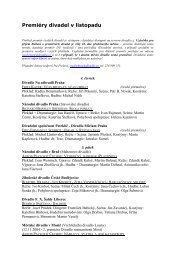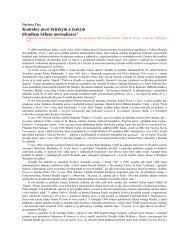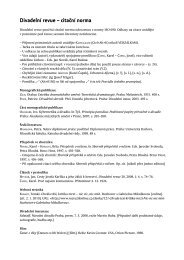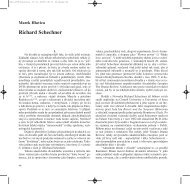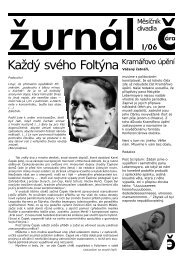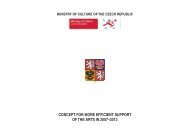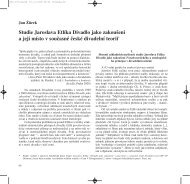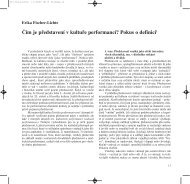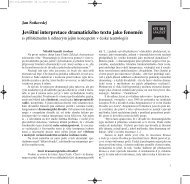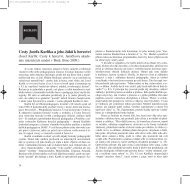METAPHOR AND IRONY 2 - Divadlo.cz
METAPHOR AND IRONY 2 - Divadlo.cz
METAPHOR AND IRONY 2 - Divadlo.cz
You also want an ePaper? Increase the reach of your titles
YUMPU automatically turns print PDFs into web optimized ePapers that Google loves.
Ivo Žídek<br />
Ivo Žídek was born in Ostrava in 1948 and is a set designer. From 1968-70 he<br />
studied stage design at the Theatre Faculty of the Academy of Performing Arts in<br />
Prague, where he was one of the last pupils of Professor František Tröster, and<br />
from 1971-74 at the School of Applied Arts under Professor Josef Svoboda. He is<br />
not far from action scenography or from the three-dimensional space of František<br />
Tröster in his more challenging tasks. He has worked for both small and large<br />
theatres, including the National Theatre in Prague, and is a sought-after stage<br />
designer for operettas and musicals. The high point of his work was with the<br />
Theatre On the Balustrade in Prague and its artistic director, the intellectually<br />
demanding director Jan Grossman. The influence of Žídek's brief period of study<br />
with František Tröster was manifested on this small stage, which has asserted<br />
progressive tendencies in the theatre ever since its foundation (1958). In Molière's<br />
Don Juan (1989) a central, structurally conceived object occupied most of the stage<br />
space. This concrete fragment of a monument of architecture changed its<br />
meaning, “atmosphere” and function in connection with the stage action and<br />
actor's performances. Although stable, it functioned as a meaningfully variable<br />
element of the staging. The eerily enlarged and narrowed doors in Václav Havel's<br />
autobiographical Largo Desolato (1990) surrounded the comings and goings of<br />
private individuals like ramparts of silent but ever-present spies. At the same time<br />
they created a projection screen for the play of the deformed shadow of an<br />
antique chandelier whose arms/tentacles made the eeriness of the nightmares of<br />
the spied-on dissident protagonist visible. The central accent of the stage design<br />
for productions of another play by Havel, Temptation (the Faust theme updated<br />
to 1991) was a round opening in an expressively angled ceiling under which was<br />
placed a bucket and a washbasin. It served as a passage for raids by the devil and<br />
was at the same time an ordinary, uncomfortable hole, through which water<br />
dripped - a clear use of metaphor and irony.<br />
44



